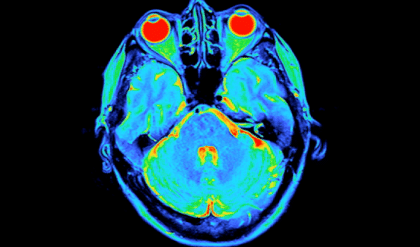
A groundbreaking study presented at the European Academy of Neurology (EAN) Congress 2025 reveals that liraglutide, a diabetes medication known to lower brain fluid pressure, has significantly reduced the frequency of migraine days among obese patients suffering from chronic migraines. Researchers at the Headache Center of the University of Naples “Federico II” administered liraglutide to a group of 26 adults who experienced at least 15 headache days each month. The results were promising, with patients reporting an impressive average reduction of 11 migraine days monthly. Additionally, the Migraine Disability Assessment Test scores reflected substantial enhancements in patients’ daily functioning, showing a remarkable decrease of 35 points in disability scores.
GLP-1 receptor agonists, such as liraglutide, have gained attention for their dual roles in treating various conditions, including type 2 diabetes and cardiovascular ailments. In diabetes management, liraglutide aids in lowering blood sugar and facilitating weight loss by suppressing appetite. However, the current study indicates that while there was a slight decrease in body mass index (BMI) among participants, it was not significant enough to influence headache frequency. This finding supports the theory that the alleviation of migraines is primarily due to the modulation of pressure within the brain rather than changes in weight.
According to Dr. Simone Braca, the lead researcher of the study, most participants noticed improvements in their quality of life within the first two weeks of treatment, and these benefits subsisted for the duration of the three-month observation period. Despite the modest weight loss, the consistent reduction in migraine days was remarkable.
Before initiating the treatment, participants were screened to exclude instances of papilledema, related to increased intracranial pressure, and other conditions that might confound results, such as idiopathic intracranial hypertension (IIH). Substantial evidence links small increases in intracranial pressure with migraine onset, which establishes a groundwork for the hypothesis that GLP-1-receptor agonists could help by mitigating the underlying mechanisms that trigger migraine attacks. Specifically, liraglutide’s ability to decrease cerebrospinal fluid secretion has shown promise in treating IIH as well, leading researchers to investigate its efficacy for managing migraines.
Dr. Braca explained that by regulating cerebrospinal fluid pressure and alleviating compression in intracranial venous sinuses, liraglutide potentially decreases the release of calcitonin gene-related peptide (CGRP), known to promote migraines. This discovery suggests that controlling intracranial pressure could pave the way for new therapeutic strategies in migraine treatment.
While some participants experienced mild gastrointestinal side effects—predominantly nausea and constipation—these did not result in any discontinuation of therapy. Following up on this exploratory 12-week study, the research team in Naples plans to embark on a randomized, double-blind trial, which will include direct measurements of intracranial pressure. They aim to evaluate the effectiveness of other GLP-1 medications in providing relief, potentially with fewer gastrointestinal side effects.
If these findings are validated through further studies, GLP-1-receptor agonists could emerge as a viable treatment option for the estimated one in seven people worldwide who contend with migraines, especially for those unresponsive to existing preventative therapies. Liraglutide’s established role in diabetes and obesity treatment underscores its potential as a repurposed solution in neurology.
Dr. Braca, a neurology resident and clinical research fellow at the University of Naples, emphasizes the importance of combining patient care with translational research to develop innovative treatments targeting the mechanisms behind migraine disorders.






